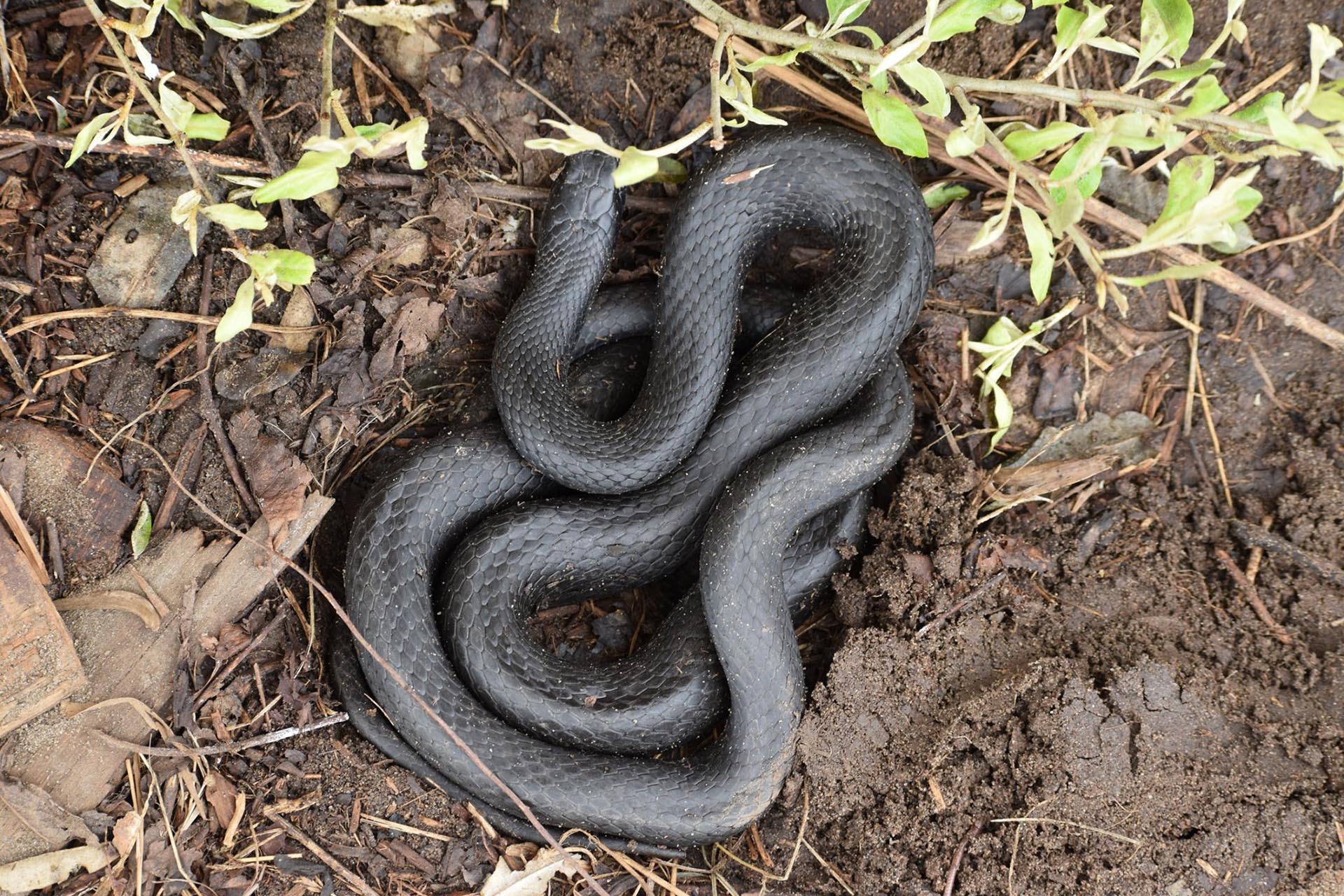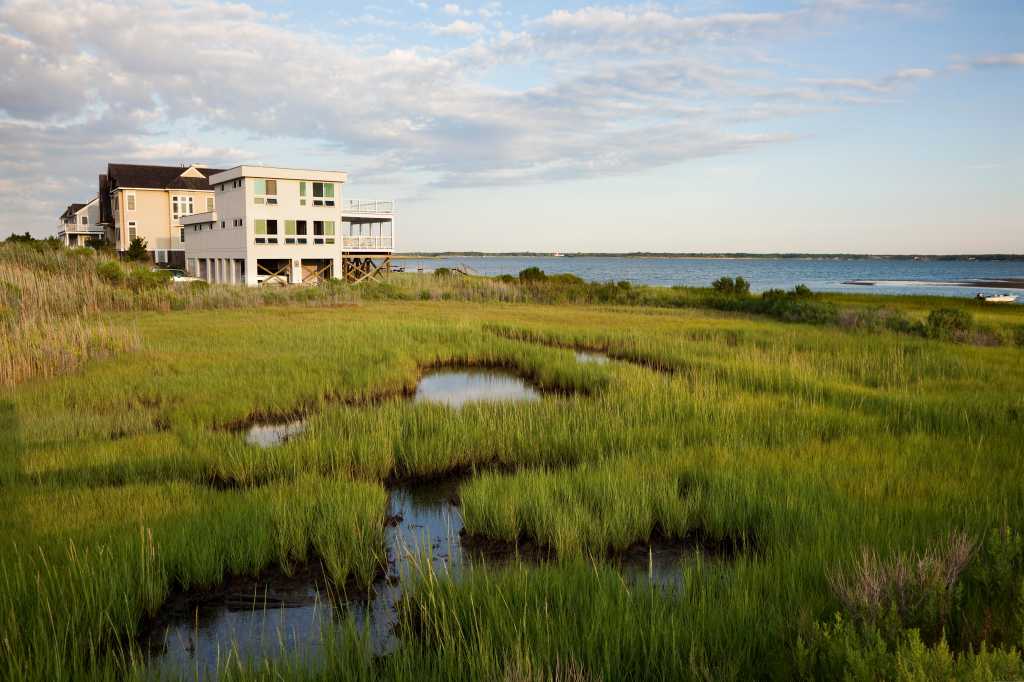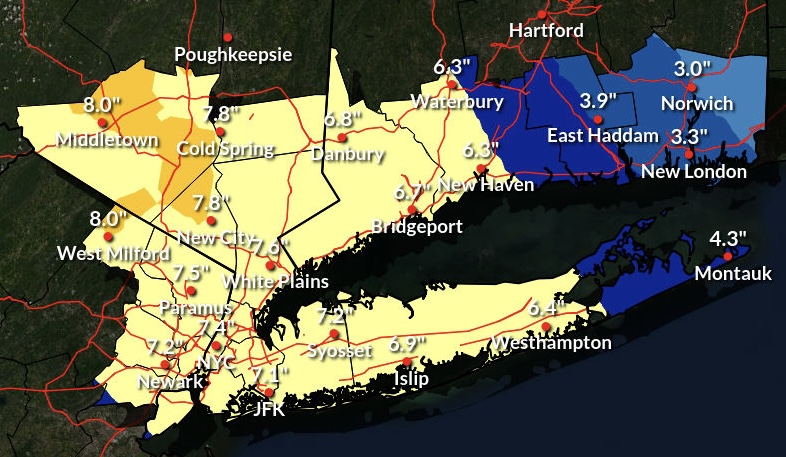The Serpent Of The South Fork


Our native eastern black racer snakes (Coluber constrictor) have emerged from their winter hibernation and are starting to take up residence in old farm fields, such as Vineyard Field behind the South Fork Natural History Museum in Bridgehampton.
My first encounter with an eastern black racer snake was several summers ago when a nesting pair of American robins were in distress and screaming in a shrub adjacent to the museum. I went to investigate, and sure enough, as I suspected, a predator-prey interaction was occurring. An eastern racer was slowly consuming all the hatchlings in the nest. It was a gloomy scene, but at the same time, an indication of the snake’s role in the environment.
Racers are carnivorous and are essential as balance keepers in providing a robust, healthy ecosystem. They can grow to 6.5 feet and can slither to a speed of four miles per hour. Racers become reproductively mature at 1-to-2 years of age and mate in the spring. Females can lay up to 36 eggs in early summer with the eggs hatching in early fall.
As juveniles, they eat a variety of insects, small frogs, salamanders, young rodents, and shrews. As they grow and become adults, they will consume larger prey, such as birds, squirrels, rabbits, turtles, and other snakes. Their prey is not constricted, as their name applies. Instead, a part of the snake’s body is thrown over the struggling victim, pressing it down on the ground before the snake eventually swallows its prey.
The racer is an alert, active, daytime sight hunter. Contrary to popular belief, the racer does not chase humans. In fact, if approached, the snake will most likely flee to a nearby burrow or some sort of thick vegetation to escape and hide.
If cornered, it may vibrate its tail against dry vegetation, which makes it sound convincingly like a rattlesnake. Although primarily terrestrial, they climb well and are occasionally observed sleeping in vegetation at night. Don’t worry, these magnificent reptiles are not poisonous. In fact, there are no poisonous snakes native to Long Island.
On May 25, Andy Sabin, president of SOFO’s board of directors, will lead an educational walk in search of this locally abundant serpent, followed by a salamander and frog search in our back pond. Andy’s passion for surveying and protecting reptiles and amphibians goes back 50 years and his knowledge makes the herpetology walks he leads an exciting and educational experience.
Frank Quevedo is the executive director of the South Fork Natural History Museum.









